Community "Nihongo Kyoshitsu" Activities Report, vol.4
In our fourth report, we introduce Tachikawa Children's Japanese Language Class (hereinafter referred to as the "Tsubasa Classroom," its nickname) that conducts its activities in Tachikawa City!

Foreigners living in Tachikawa City total 4,984, accounting for 2.7% of the city's population (as of July 1, 2022). While the ratio is high in comparison with the average of 2.1% for Tokyo's municipalities, it is still lower than the average of 4.7% for all the Tokyo wards and the average of 10.8% for Shinjuku Ward. In recent years, however, the number of children with foreign roots has been increasing, prompting growing calls for support for Japanese language learning from parents and other caretakers of children as well as schoolteachers. In response to such calls, the Tachikawa Multicultural Center (TMC) newly opened the Tsubasa Classroom on May 11, 2022, as an independent project.
On Wednesday every week, elementary school students from 15:00 to 17:00 and junior high school students from 17:00 to 19:00 learn the Japanese language at the Children's Future Center, about 13 minutes' walk from Tachikawa Station.
After our visit to the class, we talked with Kazumasa Kuwahara-san, TMC Director and Chairman of the TMC Foreign Children and Student Life Support project, and one of the driving forces behind the establishment of the Tsubasa Classroom.

The signboard of the Tsubasa Classroom drawn by students of the class
Currently, a total of 14 students, 10 elementary school and 4 junior high school, are studying at the classroom (children from five countries--China, Nepal, the Philippines, the United States and Ukraine).
Two to three supporters (volunteers) attend to a child, helping with the content of learning, including practicing hiragana/katakana, conversation practice, and doing homework from school. The learning support system involving three supporters is partly for operational reasons of avoiding absences of supporters, but it has been said that it is mainly intended to create opportunities for foreign children to interact with Japanese adults, as they usually have few such opportunities. In that sense, Kuwahara-san says, the Tsubasa Classroom is not only the place to learn but also the place to stay.
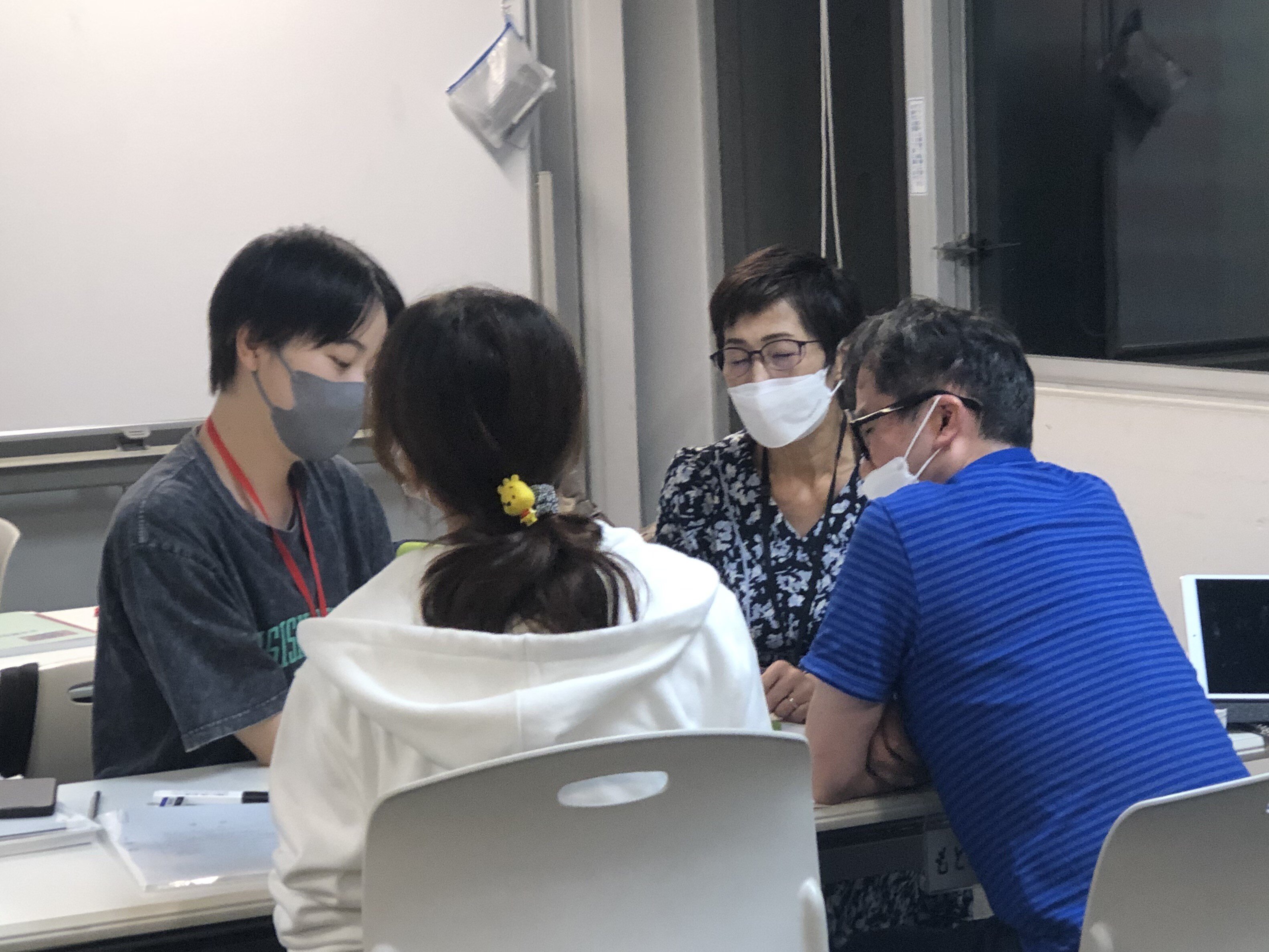
Children said they "are enjoying the class" and the "want to come every week."
He says that "I hope the Tsubasa Classroom will be the place foreign children think of when they think that 'if we go there, they try to understand us, they listen to our (poor) Japanese' and 'if we go there, we can feel relaxed.'"
Many supporters live in Tachikawa City or nearby, but we hear that it takes nearly two hours for some university students to come to the classroom. Two university student supporters we talked to during the visit to the classroom wish to become Japanese language teachers, and say that for them, the Tsubasa Classroom serves as the place to practice what they studied in university classes.
Those registered as supporters can receive training sessions by experts, where they can learn the basic knowledge for dealing with children with foreign roots and the method of teaching them.
The Start-up of the Tsubasa Classroom
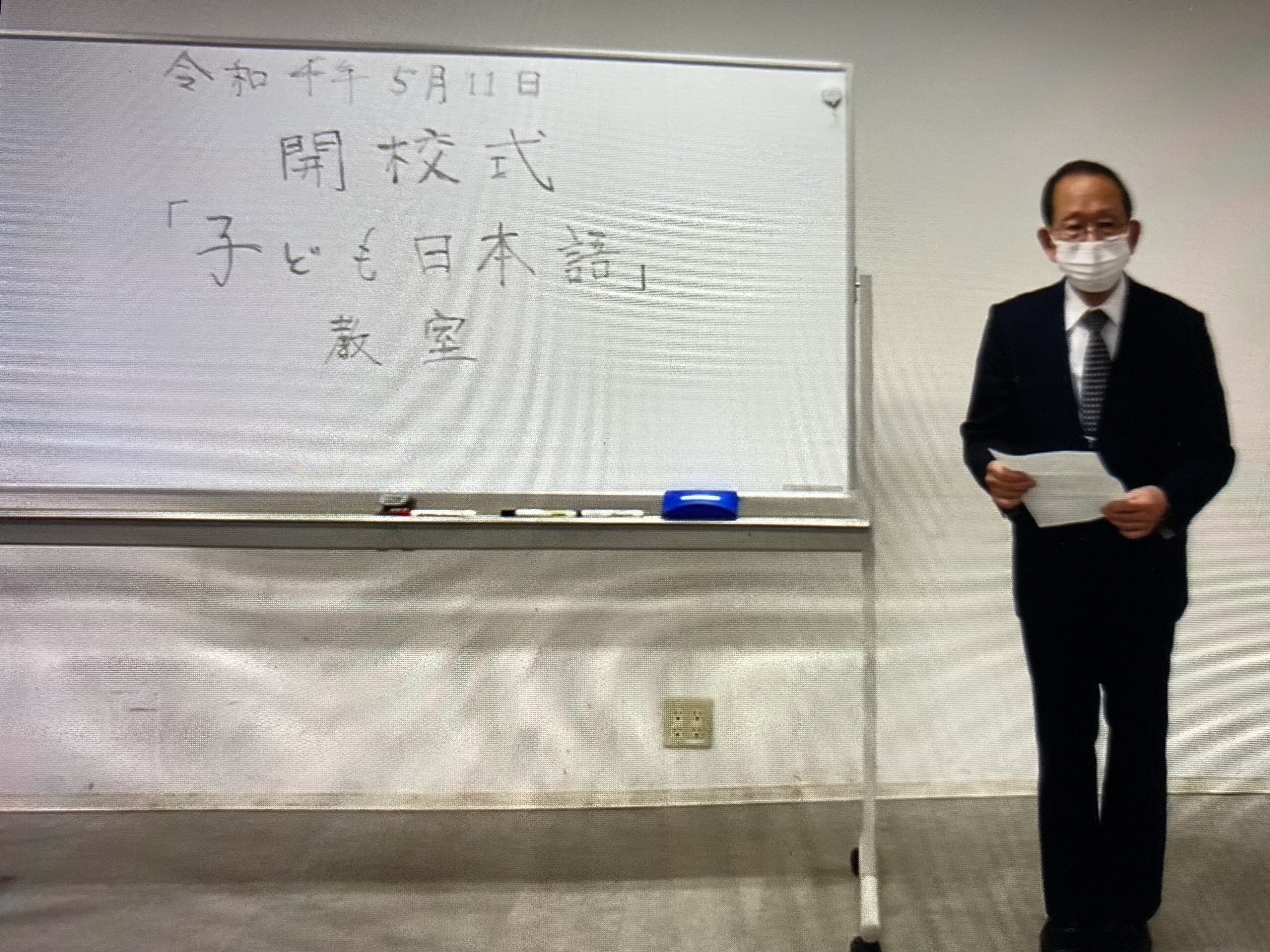
TMC Executive Director Hosoe giving a speech at the opening ceremony of the Tsubasa Classroom on May 11, 2022
Kuwahara-san joined the TMC in May 2020 and belonged to a department responsible for planning forums and symposiums. In the same year, he got involved with the planning and management of a symposium that took up the theme of "the issue of children with foreign roots," which made him become aware of the existence of children with foreign roots for the first time. He said he was particularly shocked by a child who said,
"At first, I did not want (to come to Japan). I'd rather have stayed with my grandfather and grandmother in Nepal. I thought, why am I the only one to have such a rough time."
Kuwahara-san realized that "so, that was the situation. Unlike adults, children came to Japan for reasons on the part of their parents. That determines the course of life of children, and I felt that it is quite unfair for children. After the forum, I thought that we should not just stop by simply pointing out that 'Did you know that we have these problems?'"
From there, those sharing the same awareness of the problem gathered around Kuwahara-san to form the network and established a preparatory committee for the Tsubasa Classroom. The network designed the system by referring to similar classrooms in nearby Hachioji, Kokubunji and Higashi-Murayama, and proceeded with the classroom preparation by holding negotiations with the Tachikawa municipal government and the Board of Education. In order to start the Tsubasa Classroom, Kuwahara-san said they obtained the cooperation of many people, including officials of the municipal government's Citizens Collaboration Division.
Areas Where Children with Foreign Roots Are "Scattered"
According to a survey by the Ministry of Education, Culture, Sports, Science and Technology (MEXT), there are a total of 58,353 students who need Japanese language teaching at public schools as of 2021. Of them, the ratio of students of foreign nationality receiving teaching based on special consideration stands at 90.9% (43,311), but teaching systems, their details and the extent of support differ depending on areas and schools.
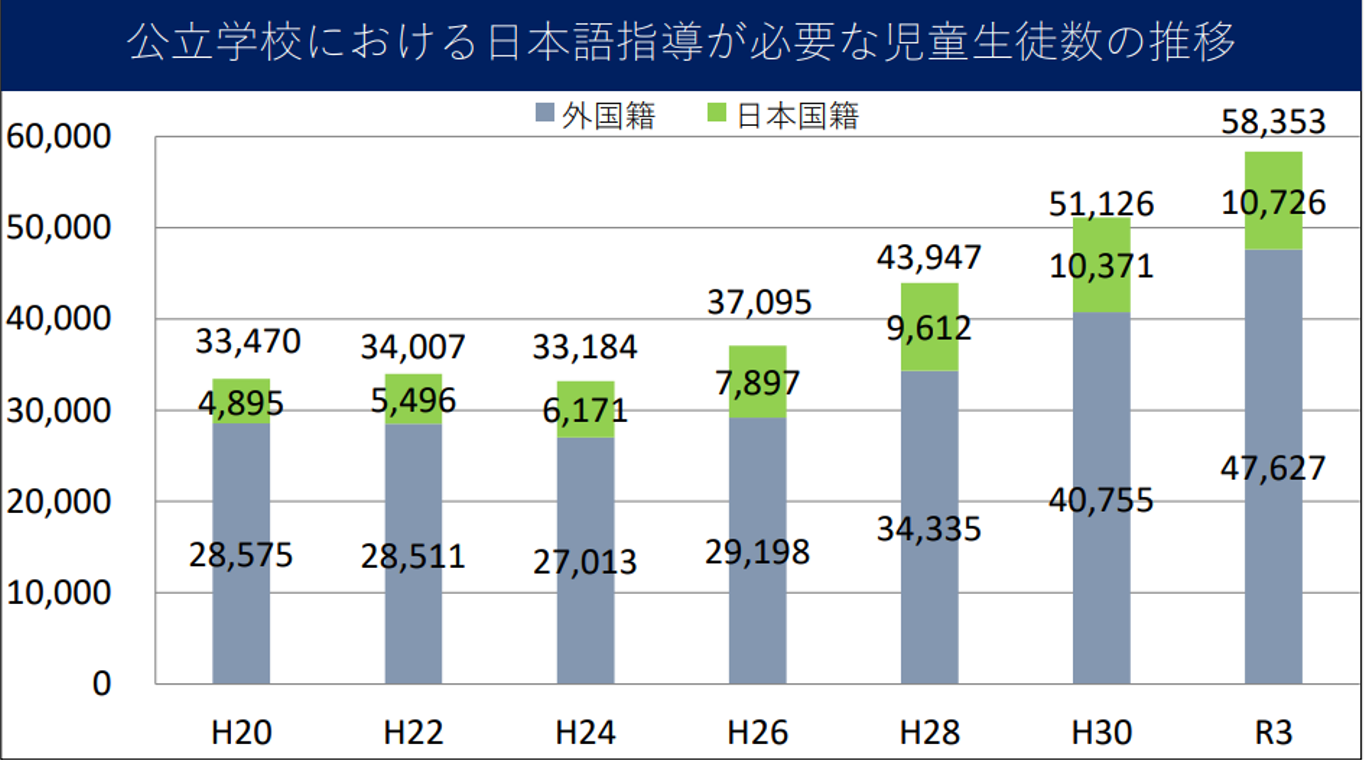
In Tachikawa City, there are 18 public elementary schools and 10 public junior high schools, where a little over 100 students, or 1.25% of the total number of students, are of foreign nationalities. Since there are children of Japanese nationality among children who need Japanese language teaching, the above numbers represent just part of the whole picture. The broad image, it is said, is that there may be one or less such student in a class and maybe four to five such students for the whole school. Unlike "concentrated areas" where many children with foreign roots live, around 1% of such children who live in "scattered areas" are unlikely to be noticed as a problem at each school and more likely to be "a buried problem."
In the case of children, if they have acquired "basic interpersonal communication skills" for daily conversation with their friends, they tend to be regarded as "OK." So, there are quite a few cases where these children fail to acquire "cognitive academic language proficiency" needed for school learning and cannot keep up with classes.
The municipal government has sent Interpretation Cooperation Team members for children and students requiring Japanese language teaching, covering 400 hours, but Interpretation Cooperation Team members are designed to teach them the content of class lessons in their native languages, not to teach the Japanese language. Kuwahara-san is worried about what will happen when the 400 hours of support ends.
Please Do Not Turn a Blind Eye to the Problem, But Look Squarely at It
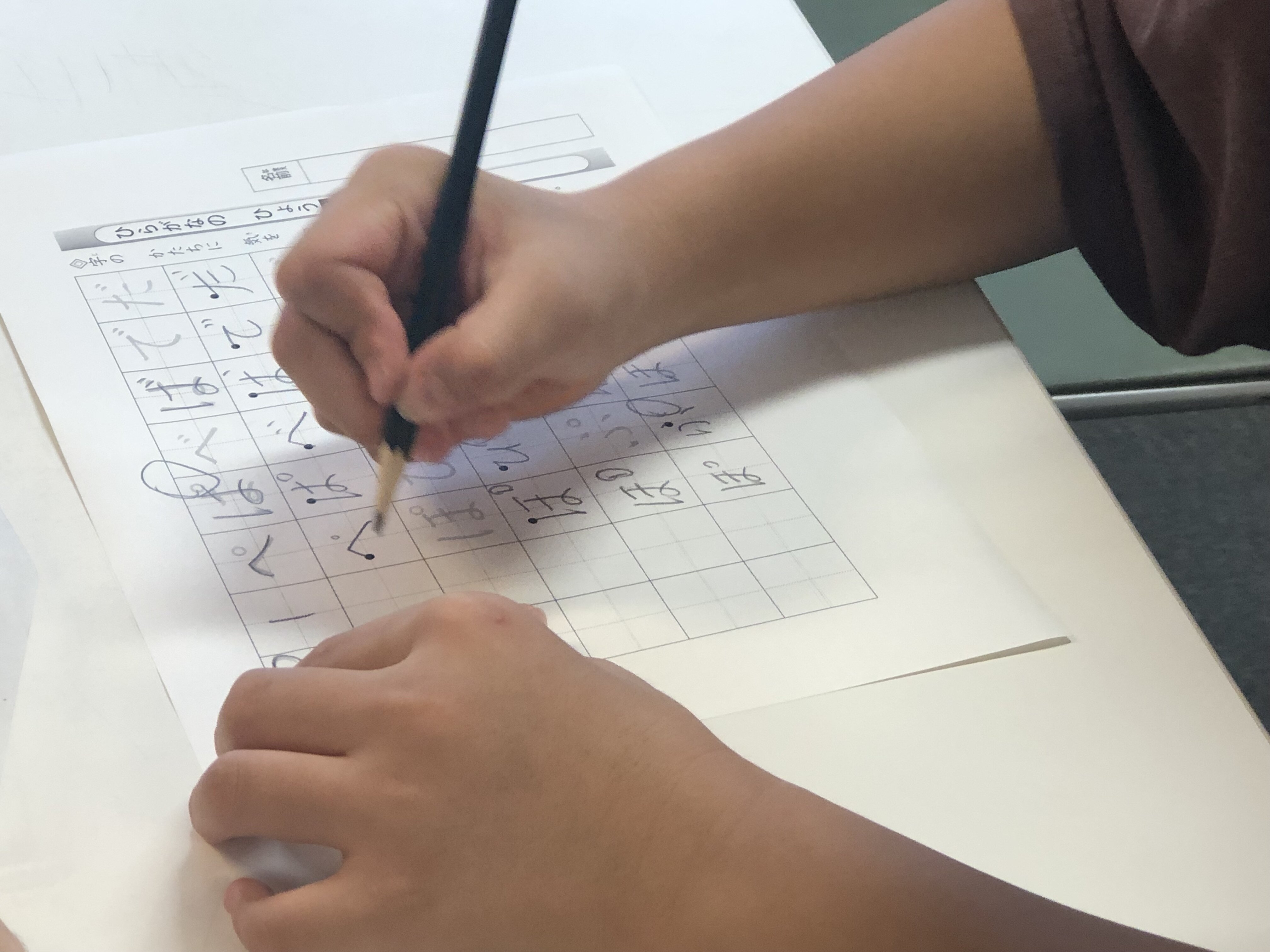
A student who just arrived in Japan learning the Japanese language, beginning with practicing hiragana
One of students attending the Tsubasa Classroom, a student who came to Japan two years ago from the Philippines, is in the third year of junior high school. However, as it is questionable whether he acquired the Kanji for the first year of junior high school, and if he has not, it will be difficult for him to move into high school without studying for another year after graduation. Like this student, there are quite a few cases where children with foreign roots were unable to enter the first year or second year in junior high school or gave up on going to high school because they did not get sufficient support in learning the Japanese language or other subjects, making it all the more important to provide necessary support as soon as possible. Kuwahara-san emphasized that "we have to realize that unless support is provided 'now' instead of 'some time,' the next 50 years of children's lives may be determined."
Kuwahara-san added that "the first thing we would like to urge schools is, when they think they may have to do something for a child who seems to have some difficulty, they should not turn a blind eye and ask us to take up the job."
In line with this thinking, he asked like-minded people to distribute leaflets of the Tsubasa Classroom at a gathering of school principals, and did get some inquiries from those who read the leaflet. "Previously, they may have thought that there was nothing they could do (even if they saw children with foreign roots in need). Once they learned that we are here to offer support, they contacted us. This is apparently an achievement of our activities," he said.
We Do Not Have to Complete Everything within Ourselves. Instead, We Should Connect to Others
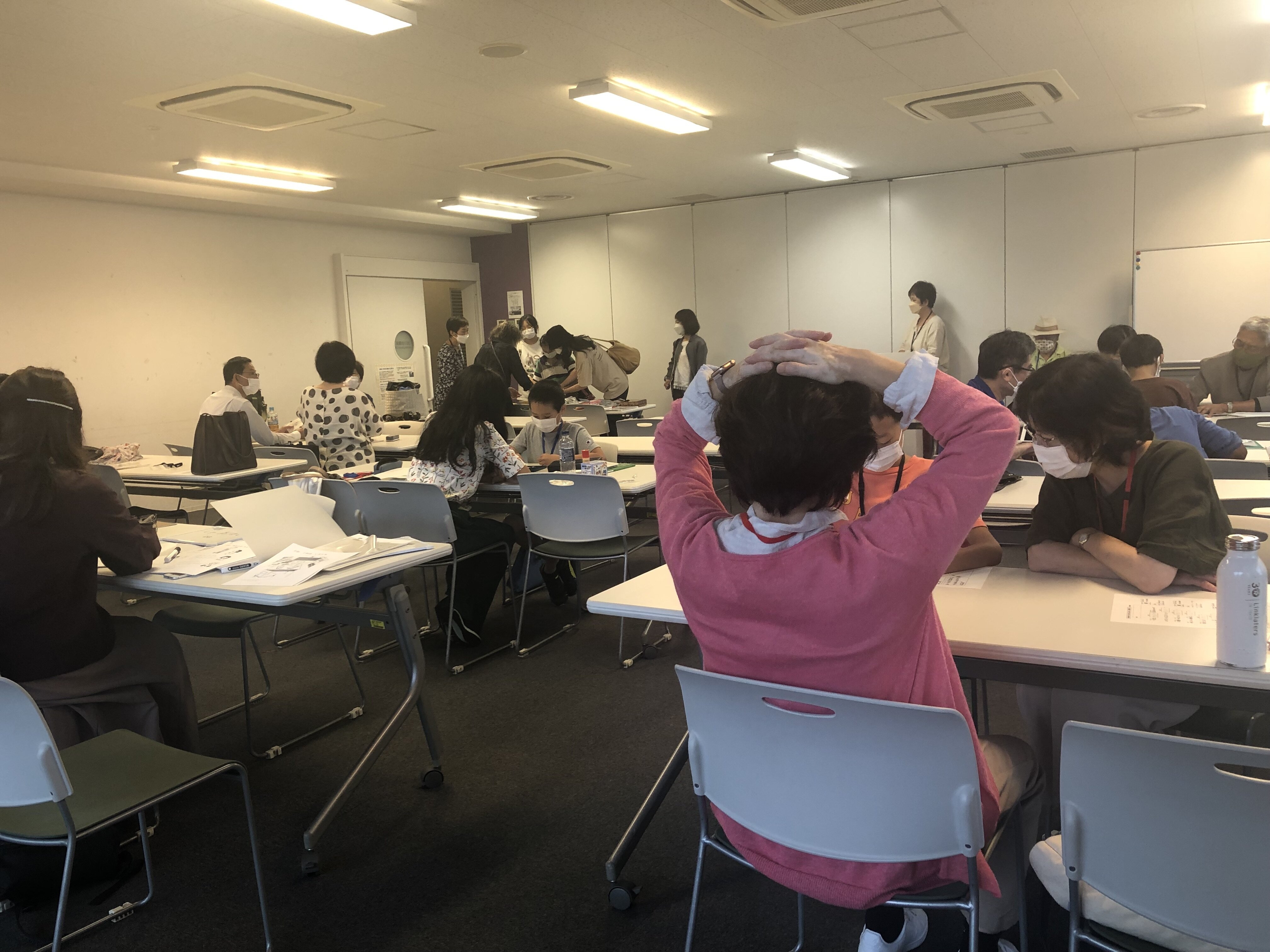
Currently, the Tsubasa Classroom accepts more children than the "around five to 10 students" they assumed at first, but requests for acceptance are still coming in. In order to respond to such requests, they are cooperating with a variety of organizations and broadening their network in their efforts to accommodate the needs of children. For children taking examinations for high school, they are connected to YSC Global School (NPO Youth Support Center) in Fussa City and cooperate in supporting their studies for their examinations, or to the CEVEC "juku" cram school run mainly by university students at the same facility to support children and students in the Tsubasa Classroom in their learning of various subjects.
Kuwahara-san pointed out that "(Some classrooms) may say 'they cannot do it' when they feel the acceptance of students exceeds their capacity. But I do not think they need to complete everything by themselves. By cooperating with organizations with varied abilities and forming networks with them, we connect to others for 'this or that problem...' When we feel that 'we cannot do any more than this,' it may be possible to do more if all of us in the network come together."
They Find It Difficult to Maintain Volunteer Classrooms
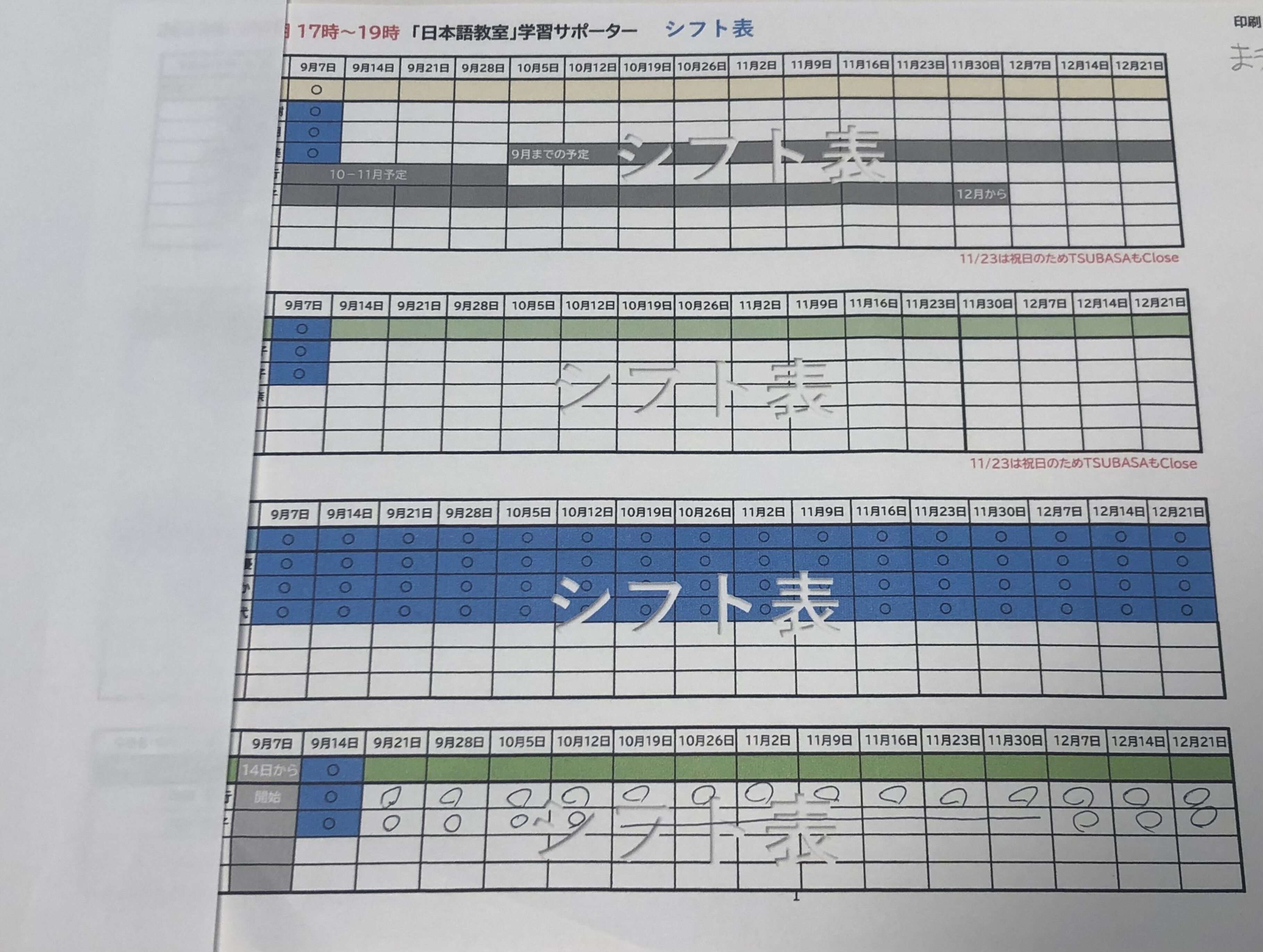
The support system of having three supporters for a child is being managed with a supporter shift table.
Kuwahara-san says that "the core element of this project is how to maintain the motivation of volunteers." At present, a total of 36 supporters in a wide range of generations from their 20s to 60s are registered with the Tsubasa Classroom. All of them are volunteers participating in its activities every week, but he says after six months of their activities, some volunteers are finding it difficult to continue their activities for a variety of reasons.
"Since they are volunteers after all, such a situation is unavoidable if they have some other priorities. We will try to maintain the minimum level of activities by making use of the resources we have to their limit. We may flounder unless people with firm commitment take over from others amid the generational shift," he adds.
Regarding the frequency of holding the classroom, he says that some call for "twice a week because once a week is not enough." With respect to places to hold classrooms as well, Kuwahara-san is well aware that the Tsubasa Classroom alone is not enough. But he says that the first thing to do is to establish the system and mechanism to steadily maintain the Tsubasa Classroom and find out the maximum level of power that volunteers can do, seeing it important to continue classroom activities in collaboration with other organizations.
Kuwahara-san emphasizes that "There are students who may find it impossible to go to high school unless we provide support for them now. If your own children or the children of your relatives are in the same situation, you cannot naturally walk away from them. Starting from there, the question is what you can do with such a problem."
Through the strong will of volunteers, the support previously provided by "individuals" has now become the "field" of organized and systematized support. The Tsubasa Classroom widened the "network" with NPO and other organizations and is broadening the safety net so as to not miss any of children who need support. In order to deliver such support to as many children as possible, it is hoped that the public administration will further improve its systematic support structure and environment.
To that end, it is important for people in the field as well as society as a whole to first realize such realities. After realizing them, we should explore what we can ourselves, instead of turning a blind eye by thinking that such realities have nothing to do with us. If such people increase one by one, society itself may change, even little by little.
Kuwahara-san, who first called for the establishment of the Tsubasa Classroom, and those who agreed with him and gathered for the classroom, are continuing their activities today in order to protect the potential lives of children.
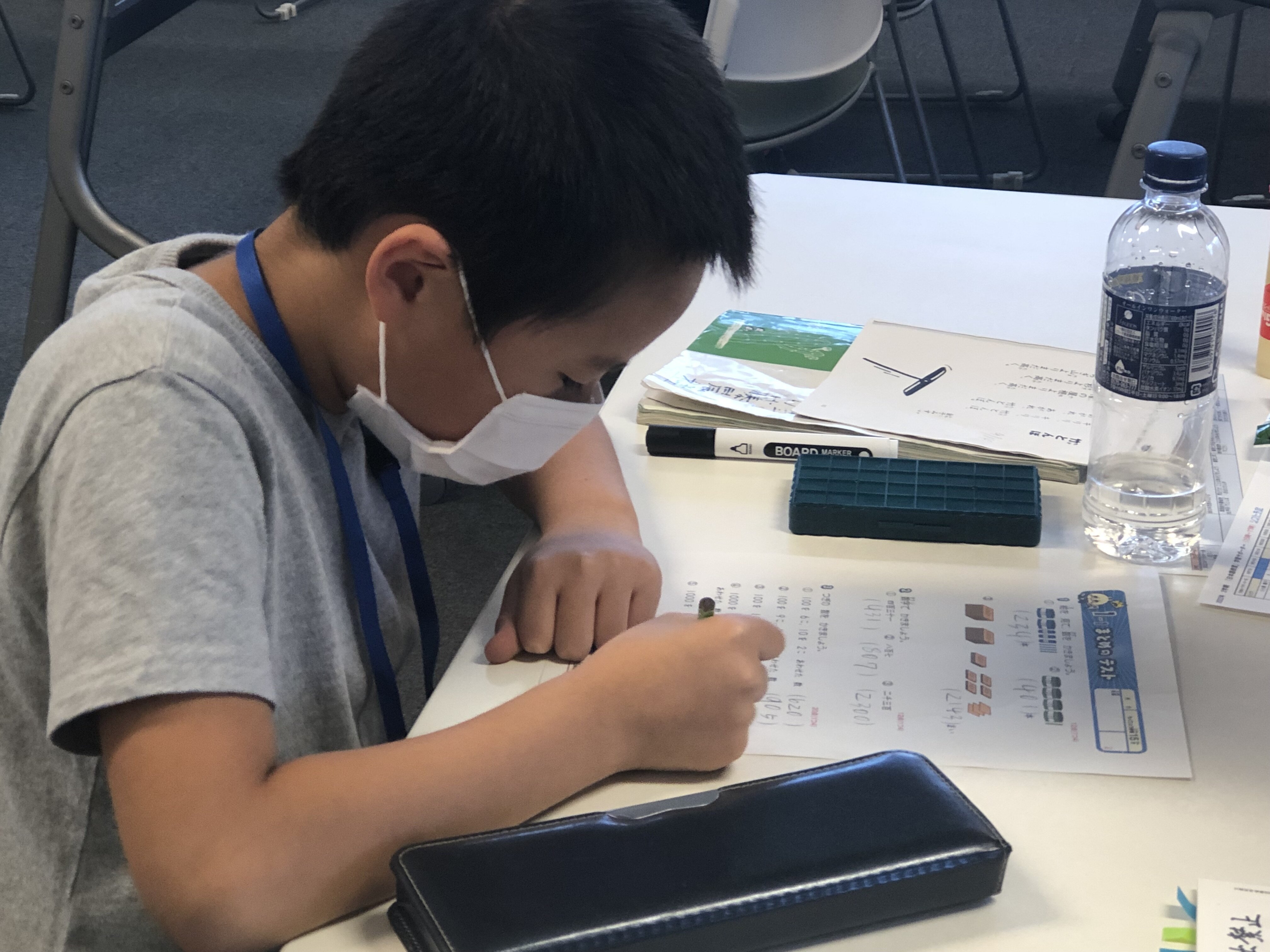
We were deeply impressed by the words of Kuwahara-san that "we should provide support 'now,' instead of 'some time.'"
Which classroom will we pay a visit to for the next Community Nihongo Kyoshitsu Activities Report? Please look forward to the next installment!
by.MK
The Tsubasa Classroom is accepting applications for supporters (volunteers) who teach children in the classroom.
Anyone who wishes to register as a supporter or is otherwise interested in the classroom's activities, please see the website of the Tsubasa Classroom.
URL:https://www.tmc.or.jp/Jidou_seito_shien.html
